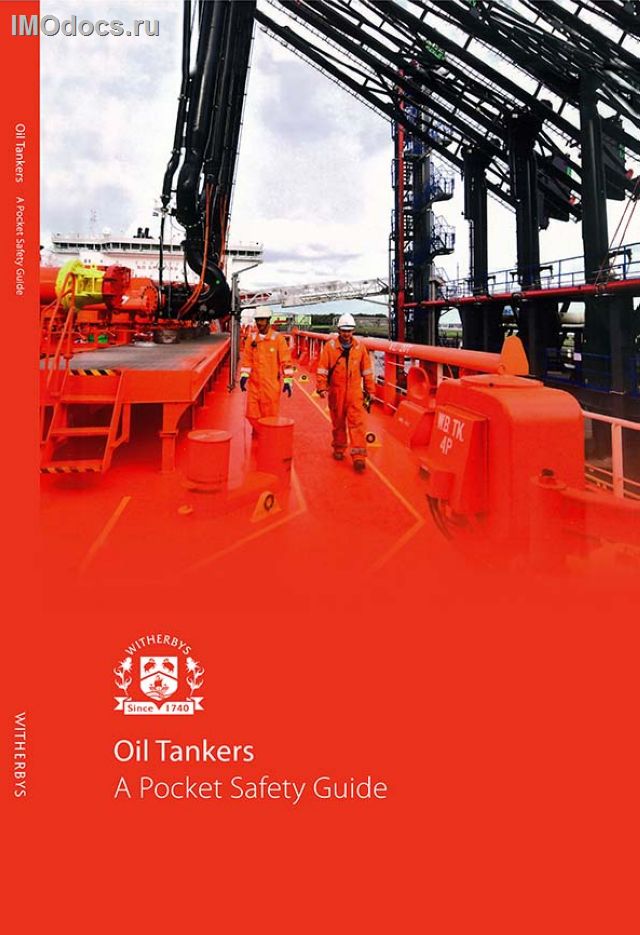
This pocket-sized book has been significantly updated for 2018.
It covers the most important ship safety topics and outlines summaries of the industry best practices that apply to all crewmembers working on oil tankers.
Recent developments in safety including updates to safety management practices, safe mooring operations, the procedure for entry into confined spaces and atmosphere testing have been incorporated.
The book reviews a variety of common hazards and topics on oil tankers, for example carrying out safe cargo and lifting operations, the correct use of PPE and safe access/movement around the ship. It is an essential ‘back to basics’ safety guide for seafarers of all ranks and positions.
As such it is an ideal companion for tanker familiarisation both ashore and on board, as well as for those seeking training or further education in safe oil tanker operations.
Contents
Safety – the Main Message
About this Book
Chapter 1 – The Ships
Chapter 2 – Safety Systems
2.1 Risk Assessments
2.2 Permit to Work Systems
2.3 Toolbox Talk
Chapter 3 – Personal Safety
3.1 Safety and Work on Board
3.2 Asking for Help and the Safety Officer
3.3 Personal Safety – Slip, Trips and Falls
3.4 Personal Safety – Manual Handling
3.5 Life On board
Chapter 4 – Personal Protective Equipment
4.1 Head Protection
4.2 Eye and Face Protection
4.3 Respiratory Protection
4.4 Ear Protection
4.5 Body Protection
4.6 Hand and Finger Protection
4.7 Foot Protection
4.8 Fall Protection
4.9 Buoyancy Aids
Chapter 5 – Equipment Hazards
5.1 Portable Tools and Equipment
5.2 Hot Work
5.3 Laundry Equipment
5.4 Other Considerations
Chapter 6 – Fire Hazards and Extinguishing Fires
6.1 Fire Hazards
6.2 Extinguishing Fires – Reaction
6.3 Types of Extinguisher
6.4 Using a Fire Extinguisher
Chapter 7 – Environmental Hazards and Enclosed Spaces
7.1 What is a Safe Environment?
7.2 Petroleum Liquids and Chemicals
7.3 Toxic Gases and Vapours
7.4 Enclosed Spaces
Chapter 8 – Operational Hazards
8.1 Static Electricity
8.2 The Ship/Shore Interface
8.3 Cargo Operations
8.4 Mooring Safety
8.5 Safe Access
8.6 Use of Paints and Chemicals
Chapter 9 – Lifting Operations
Chapter 10 – Safety Inspections, Drills and Emergencies
10.1 Safety Inspections
10.2 Drills
10.3 Emergency Responses
Chapter 11 – Cyber Security
Glossary
Introduction
This book explores practices on ships carrying crude oil and petroleum products and provides a good introduction to safe tanker practice, terminology and standards. It is not a detailed operational guide, but is aimed as a ‘back-to-basics’ safety guide for seafarers of all ranks and positions. It is suitable for seafarers who may be rejoining a tanker after leave for example, or for a person with little or no experience on tankers. Ideally, it should be read to aid the familiarisation process whenever you join a tanker.
The International Safety Management (ISM) Code sets standards for your company’s safety management system (SMS) and operating manuals. These will provide the details and procedures to allow you to work safely at sea, so you must follow them carefully. This book is an addition to the standards and not an alternative to them.
As a crew member on a tanker, you are encouraged to seek further information and detail on the contents of this book. In particular, you should read the publication ‘ISGOTT: the International Safety Guide for Oil Tankers and Terminals’.
When reading this book, you may find terms that are new to you. A glossary of technical terms is provided at the end, and you should refer to this if you are uncertain about meanings. If you are still unsure, ask a senior officer or other responsible member of the ship’s crew.
_____
*) см. ISGOTT на русском языке
и на английском языке
 Количество
Количество
